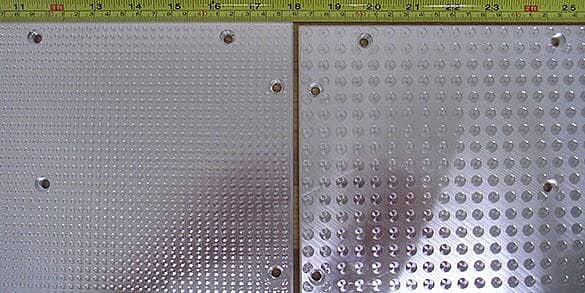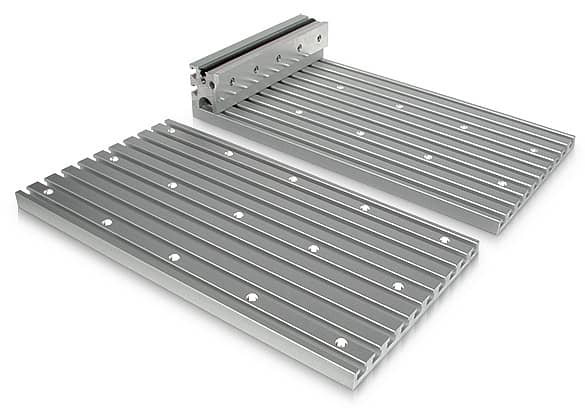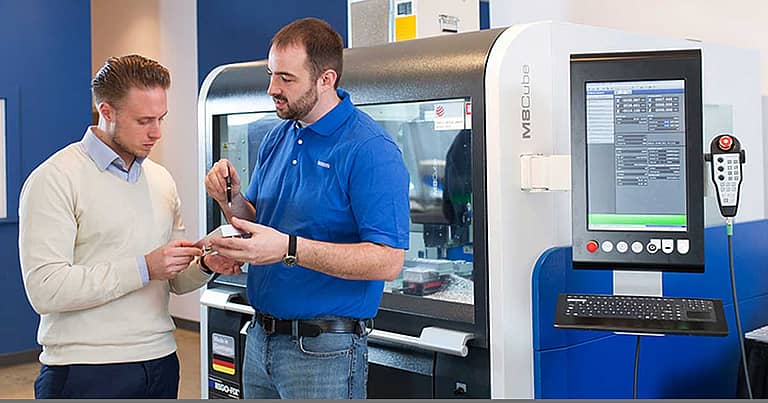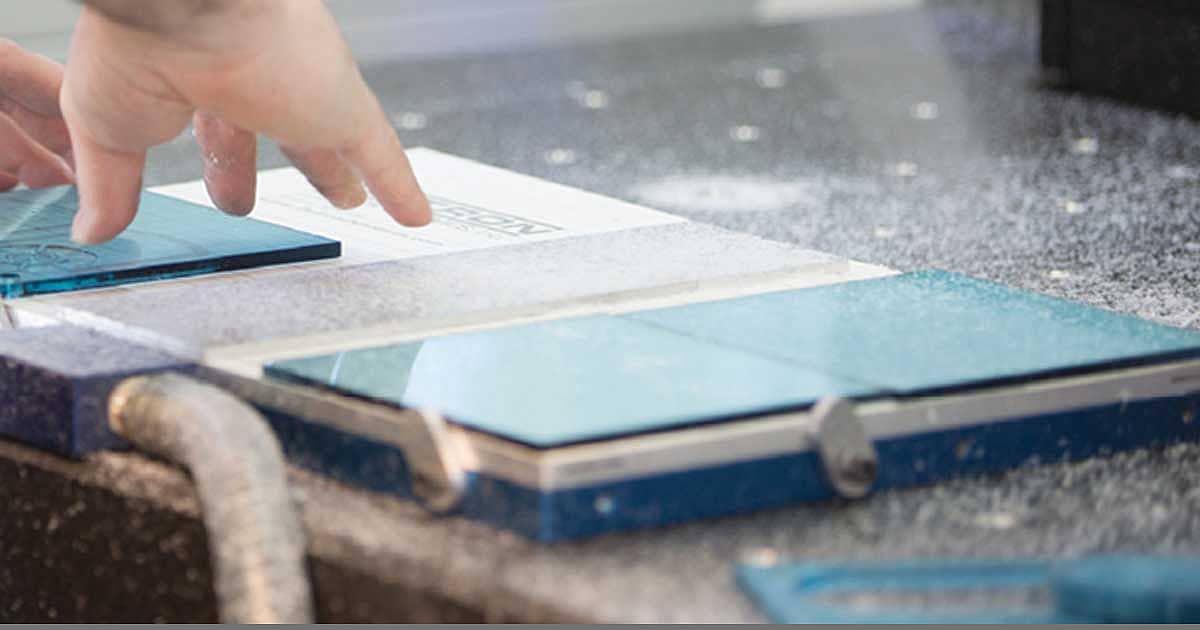
Understanding how vacuum chucks work, and how they can make your life easier.
We answer questions about our machines daily, but sometimes, we receive even more interest in our vacuum tables (also known as vacuum chucks). Although vacuum tables are not an uncommon accessory in the CNC machining world, DATRON approaches them differently, making them the killer accessory to have with a machine.
This unique adaptation comes with a lot of questions, and we’re happy to answer! Let’s jump right into demystifying DATRON’s spin on vacuum workholding and figure out if it’s the right solution for you.
1. How Does a Vacuum Table Work?
The principles on which our vacuum table system works are not that different from others. Your workpiece is mounted atop a rigid aluminum grid pattern and is sucked downward with a vacuum pump, as a result, it is clamped firmly in place. This is especially useful for thin, large sheet material, where traditional clamping methods deliver lackluster results. This is where the similarities end, though.
2. What’s the Thin Sheet Do?
Perhaps the most common and confusing question is what the substrate layer does with our vacuum tables. On nearly every other vacuum chuck design, a gasket needs to be installed into the top of the plate in order to seal against the workpiece – this ensures minimal vacuum loss and strong clamping. The downside of this comes from its inherent limitations – since the gasket is necessary for a strong seal, if the part is cut through, vacuum is lost completely, and the part and tool are destined for the scrap bin.
You don’t need to worry about gasketing off your part, it just has a way of directing the vacuum forces on it’s own… as we’re cutting through this, it’s no problem at all. – John Saunders, Saunders Machine Works
Enter Vacucard – a permeable layer in between the workpiece and the vacuum table that we get so many questions about. As compared to a standard vacuum table, DATRON doesn’t rely on a gasket for a strong vacuum, but the Vacucard layer to slow airflow around the workpiece and disperse the vacuum evenly underneath the part. When paired with a suitable vacuum pump (more on that later) the Vacucard layer allows for vacuum everywhere it’s needed, even when a part is cut through, allowing for maximum flexibility and minimum setup.
3. How Big or Small Can the Parts Be?
There’s a pretty wide range of sizes suitable for vacuum parts – ranging from as small as a Ladybug, or as big as the entire machine table, each has its advantage. For big parts, vacuum is the quickest and easiest way to secure sheet material without the headache of installing clamps and having to carefully program around them.
For small parts, the advantage is the ability to batch mill many pieces from a single sheet. There is even a variety of our substrate, Vacucard +++, which has an adhesive grid to aid in the holding of extra small parts to ensure they keep still for the final cut.
4. How Much Clamping Force Does it Provide?

Holding small parts with vacuum is made easy with a DATRON vacuum chuck and Vacucard +++
This is one of my favorite questions to answer because I get to nerd out on the science behind it! The reason vacuum workholding clamps parts so tight isn’t because of the suction underneath, rather, it’s the amount of pressure above. When you pull a hard vacuum underneath your workpiece, the force that is holding it in place is actually atmospheric pressure.
Since there is a massive difference in pressure from under the part (25-29 inHg) versus the top of the part (14.7 psi at sea level) the result is a rigid bite on the vacuum chuck. Figuring out the clamping force on your own is an easy task – simply take the surface area of your material and multiply it by the atmospheric pressure at your altitude.
For example, a 9-inch square piece of material has 81 square inches of surface area, and the atmospheric pressure at sea level is 14.7psi. Therefore, 81in² x 14.7psi = 1,190.7 lbs! Rest assured, over half a ton of clamping pressure is sufficient for holding parts on a DATRON.
But what about small parts? An inch square part would only have 14.7 lbs of clamping force – it would be easy to assume that is simply not enough for holding parts. However, this is where high RPM, strategic use of cutting tools, and Vacucard+++ can ensure dependable results when cutting small parts on vacuum. Speaking of strategic use of cutting tools…
5. Do I Need to Reduce my Feeds and Speeds?
Most of the time, the answer is no. Using the right cutting tools and leveraging the RPM on tap allows for milling without restrictions. However, when it comes down to cutting the part out on the final pass, some extra attention should be paid. How much surface area will be left when the part is cut out, what size tooling is being used, and the toolpaths used beforehand to get to that point are important details to observe.
Little tricks like cutting a descending tab left from a ramp, leaving drops behind instead of pockets, and using the smallest tool available are all easy ways to assure a safe final operation.
6. What Vacuum Pump is Needed?
Compared to typical vacuum tables, a DATRON vacuum chuck needs a little more power behind it to keep up. Since the table design allows for even vacuum distribution, uncovered areas allow air to pass through – however slowly. This is easily managed with the industrial vacuum pumps we recommend, supplying from 20 to over 200 CFM of airflow ensures a tight grip on your part throughout the milling process.
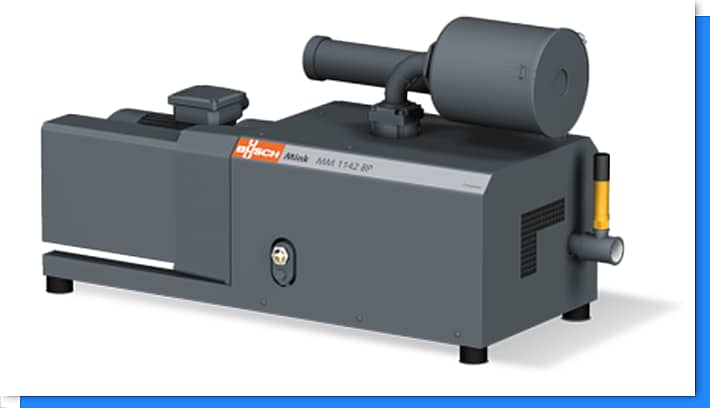
7. How Do You Avoid Cutting the Vacuum Table?
A good vacuum chuck is a worthwhile investment, but how do you protect it? It can be a bit frightening handing the controls over to a new operator, all the while praying you return to your machine with an intact vacuum table. We’ve been dealing with these issues for some time and have found several solutions to ensure smooth sailing.
First, the Vacucard layer between your material and the vacuum chuck serves as a sacrificial membrane, allowing you to cut completely past the material by as much as 0.028” (0.70mm) before reaching the table. However, this might not be enough if a part is programmed to cut too deep, or the zero is set incorrectly. This is where Protection Fields come to your defense.
Protection Fields are a software function available for all our machines that allows you to set a “no-fly zone” wherever you need in the machine. Setting a field around your vacuum chuck allows for the tool to come within thousandths of it, but never touch it, alerting the operator of any upcoming violation and halting the program immediately. Combined with automatic tool length measuring, you’ll feel a lot more confident leaving a neo with a newbie.
8. What’s the Success Rate for Holding Parts?
It is completely fair to be uneasy with the thought of investing in a comprehensive vacuum workholding solution and not be certain whether it’s going to work well for your parts. We don’t like the idea of our customers buying something they don’t need in the first place, either. So, to avoid anything short of complete success, we have our Applications Engineers review projects with every customer to ensure that the parts are an ideal fit for vacuum workholding.
However, we know that sometimes accidents happen. The table surface isn’t clean, the material is warped, your Vacucard is worn out – that’s why we integrated Vacuum Monitoring. Easily set at the machine, Vacuum Monitoring allows the user to set a minimum vacuum level that must be maintained throughout the program, or else the machine will pause and immediately alert the user of the fault. Just another layer of protection from an expensive mistake.
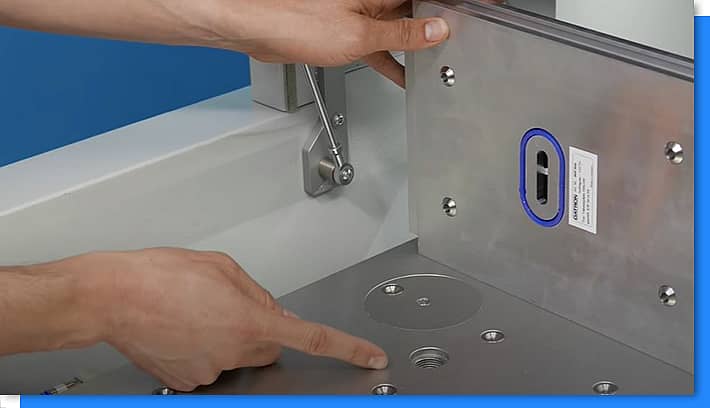
9. Is it Easy to Setup?
Just like our other workholding accessories, our vacuum chuck system is extremely convenient to set up. During the initial install, the vacuum pump will need to be placed, plumbed, and wired by an electrician. Using the conical grid system, the vacuum table is mounted, milled flat and true to the machine, and then can be removed and reinstalled with a high level of repeatability. Since vacuum supply is routed through the bottom of the machine table, there are no hoses to wrestle with – making setup a plug-and-play experience.
After that, the maintenance is easy and infrequent. Besides following the manufacturer’s recommendations for maintenance on the pump, you may occasionally need to replace a gasket or filter… That’s it.
Hopefully, this list has answered some of your lingering questions about vacuum workholding. If you think vacuum workholding might be the answer to your manufacturing dilemma, contact our team!




